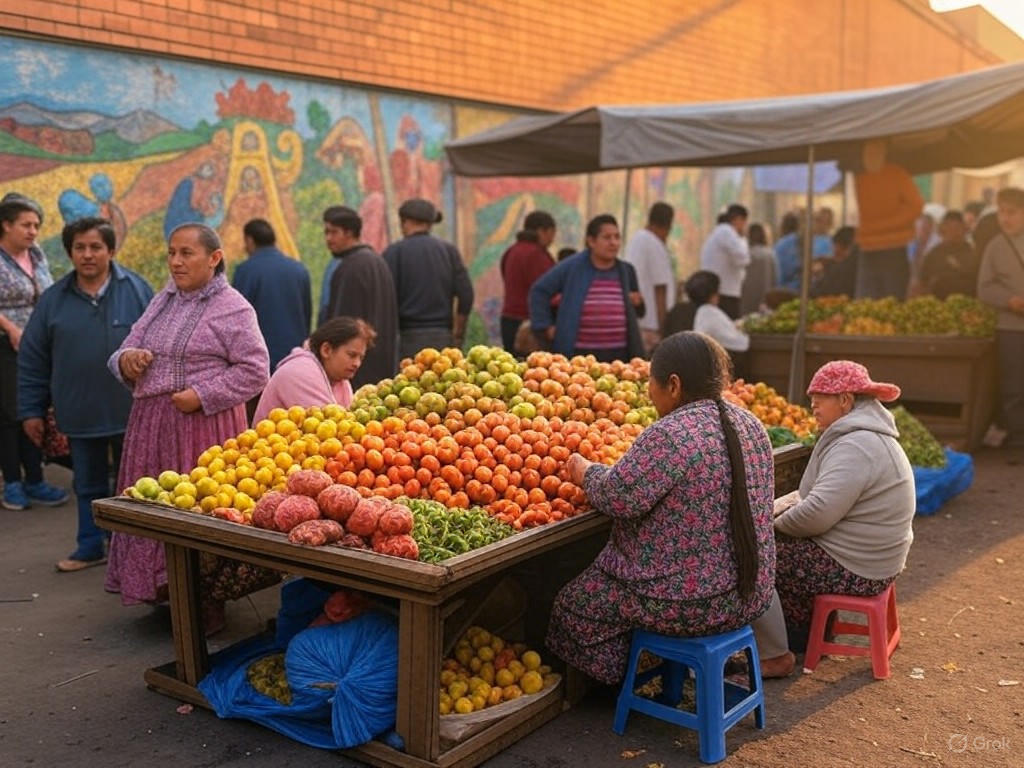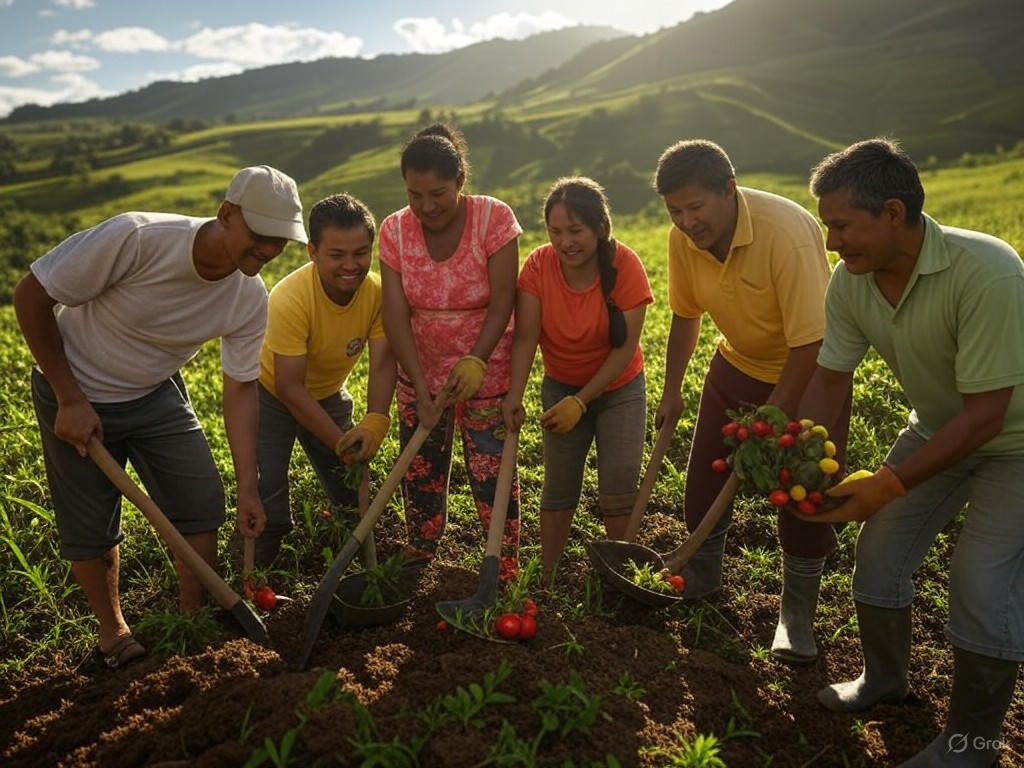Microgrants in Colombia: Community Projects
Introduction: Seeds of Self-Reliance in the Andes
In the rugged hills of Colombia's Antioquia region, a small village once struggled with the remnants of economic stagnation and fragmented infrastructure. Yet, through a modest infusion of microgrants—small, targeted funds aimed at fostering local entrepreneurship—a group of residents transformed an abandoned plot into a thriving cooperative farm. This story, emblematic of microfinance's quiet revolution, underscores a fundamental truth: when individuals are equipped with practical tools and the freedom to innovate, communities can flourish without relying on expansive government intervention.
Microgrants, a subset of microfinance, provide low-interest or no-interest funding to individuals and groups for community-driven projects. In Colombia, these initiatives have gained traction, channeling resources into areas like agriculture, education, and small business development. As we examine this phenomenon, it's essential to recognize how such mechanisms align with free-market principles, emphasizing personal initiative and sustainable growth over bureaucratic oversight. Drawing from historical lessons of self-reliance, akin to the deliberate, practical ethos of early American innovators, microgrants in Colombia exemplify how limited government involvement can empower citizens to build resilient societies. This editorial explores the mechanics, impacts, and broader implications of these efforts, weaving in evidence from credible sources to paint a balanced picture of opportunity and challenge.

Farmers in rural Colombia harvest coffee beans, supported by microgrant-funded cooperatives that promote agricultural self-sufficiency and community collaboration.
The Mechanics of Microgrants: A Free-Market Approach to Empowerment
At its core, microfinance—and specifically microgrants—operates on the premise that small-scale financial support can unlock human potential without the need for heavy-handed regulation. In Colombia, organizations like Fundación Carvajal and private foundations administer these grants, often partnering with local banks to distribute funds ranging from $100 to $1,000. Unlike traditional loans, microgrants typically do not require collateral, making them accessible to marginalized groups such as rural farmers and urban artisans. This model prioritizes community empowerment by encouraging recipients to propose and execute projects that address local needs, from building water systems to launching small businesses.
This approach resonates with center-right values, where free markets reward initiative and hard work. By minimizing government involvement, microgrants foster a sense of ownership and accountability among participants. For instance, in cities like Medellín, microgrants have funded vocational training programs that equip young adults with skills in trades like carpentry and mechanics, reducing unemployment through private-sector partnerships rather than public welfare programs The Wall Street Journal. Such efforts not only drive economic activity but also reinforce traditional values of diligence and community cohesion, as families and neighbors collaborate on projects that yield long-term benefits.
However, the success of microgrants hinges on their targeted application. In Colombia, where economic inequality persists despite decades of policy reforms, these grants avoid the pitfalls of broad government subsidies by focusing on measurable outcomes. Recipients are often required to demonstrate progress through simple reporting mechanisms, ensuring funds are used efficiently. This contrasts with larger aid programs that can lead to dependency, highlighting microfinance's role in promoting fiscal responsibility and individual agency.
Analysis: Driving Local Development Through Practical Innovation
The impact of microgrants in Colombia extends beyond immediate financial relief, catalyzing broader local development that aligns with free-market ideals. By empowering communities to address their own challenges, these initiatives reduce the need for expansive government intervention, allowing resources to flow where they are most needed. In regions affected by past conflicts, such as the coffee-growing areas of Cauca, microgrants have revitalized traditional industries, enabling farmers to adopt sustainable practices and access new markets World Bank.
One key benefit is the ripple effect on employment and education. A study of microgrant programs in Latin America shows that for every dollar invested, there is a measurable increase in household income and community infrastructure Inter-American Development Bank. In Colombia, this has manifested in projects like community libraries and health clinics, where local groups use grants to purchase essential supplies and training. Such developments underscore how microfinance supports traditional values—such as family unity and local craftsmanship—by enabling people to invest in their own futures without external mandates.
Yet, a balanced view requires acknowledging potential limitations. Not all microgrant initiatives succeed; some falter due to inadequate planning or external factors like market fluctuations. In Colombia, where inflation and currency volatility have historically challenged small enterprises, recipients must navigate these risks independently. This reality reinforces the center-right perspective that while government can provide a basic framework for stability, true progress stems from personal resilience and market-driven solutions. Over-reliance on public funds could stifle innovation, as evidenced by critiques of subsidized programs in other nations Heritage Foundation.

Young entrepreneurs in Bogota participate in a microgrant-funded workshop, learning skills for sustainable business ventures and fostering a spirit of self-reliance.
Evidence and Challenges: A Closer Look at Outcomes
Empirical evidence supports the efficacy of microgrants in Colombia. According to data from the Colombian government’s National Planning Department, regions with active microfinance programs have seen a 15–20% increase in small business formation over the past five years, outpacing areas dependent on state aid The Economist. This growth is not merely statistical; it translates to real empowerment, as seen in stories of women-led cooperatives in the Amazon region, where microgrants have funded eco-tourism initiatives that preserve traditional lands while generating income.
For example, in the department of Nariño, a microgrant program supported by international NGOs helped a group of indigenous artisans expand their handicraft sales, leading to a 30% rise in local revenues. Such successes highlight how microfinance bridges gaps in access to capital, allowing communities to leverage their inherent strengths rather than waiting for top-down solutions. However, challenges remain, including the need for better financial literacy among recipients to ensure grants translate into sustainable ventures. This underscores the importance of private partnerships, such as those with banks like Bancolombia, which offer training alongside funding CGAP Microfinance Gateway.
From a center-right lens, these outcomes affirm that limited government intervention—focusing on regulatory support rather than direct funding—can amplify the benefits of microfinance. By encouraging competition among providers, Colombia’s model promotes efficiency and innovation, avoiding the inefficiencies of bloated public programs.
Conclusion: A Path Forward for Sustainable Empowerment
As we reflect on the role of microgrants in Colombia, it becomes clear that this form of microfinance represents a practical, market-oriented path to community empowerment. By fostering local development through individual initiative, these programs not only drive economic growth but also preserve traditional values of self-reliance and mutual support. In a world where government overreach often stifles innovation, Colombia’s experience offers a compelling case for prioritizing free-market solutions that enable people to shape their own destinies.
To build on this momentum, policymakers should focus on creating an enabling environment—through streamlined regulations and incentives for private investors—rather than expanding public coffers. As Henry David Thoreau might have observed, true progress lies not in the largesse of institutions but in the quiet determination of individuals. For Colombia, and nations facing similar challenges, microgrants stand as a testament to the enduring power of practical, community-driven action.
In total, embracing such approaches could lead to more resilient societies, where empowerment is not a handout but a hard-earned opportunity. As we move forward, let us advocate for systems that honor the dignity of work and the wisdom of local knowledge, ensuring that the seeds of today’s microgrants blossom into tomorrow’s prosperity.

